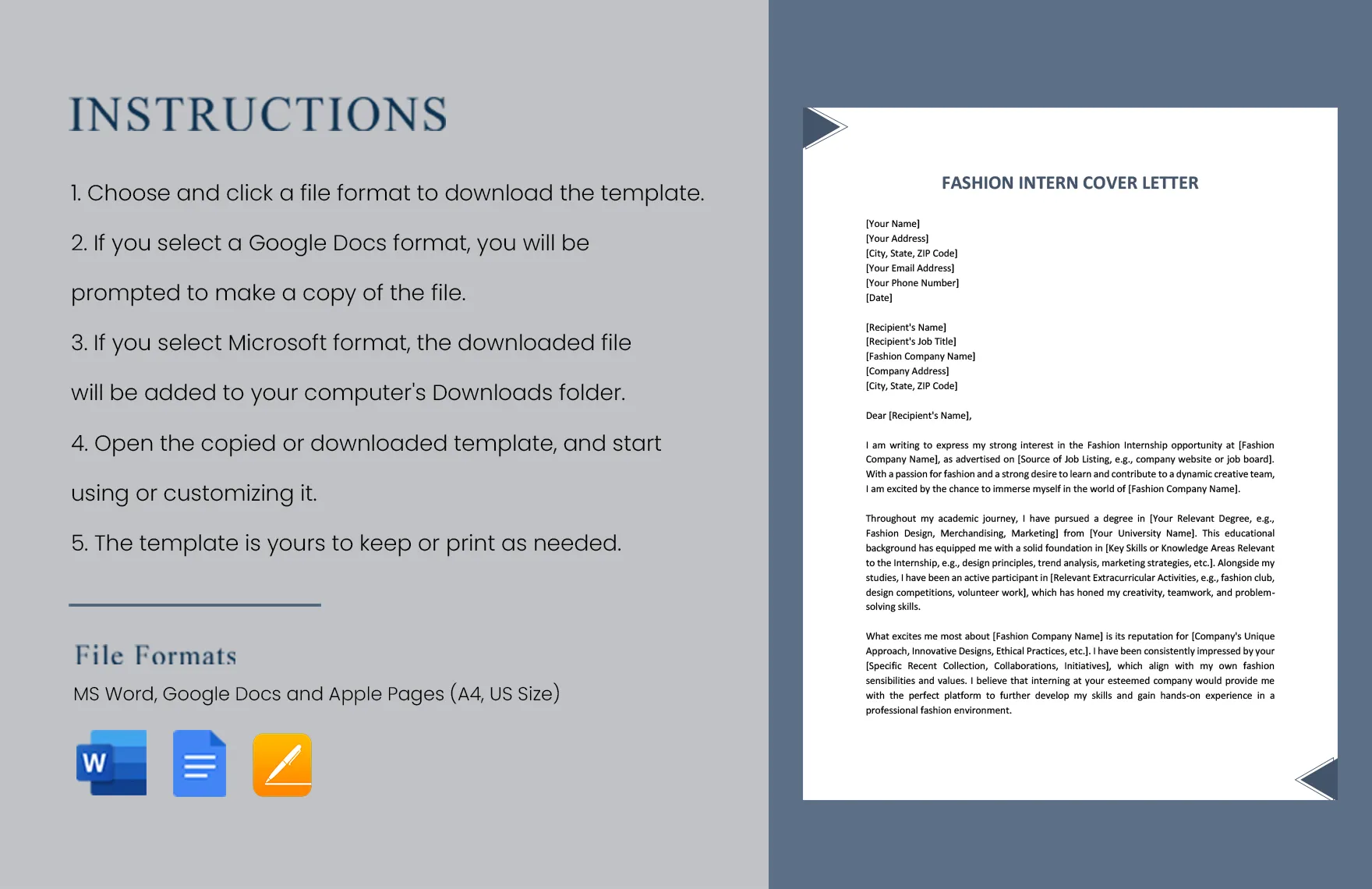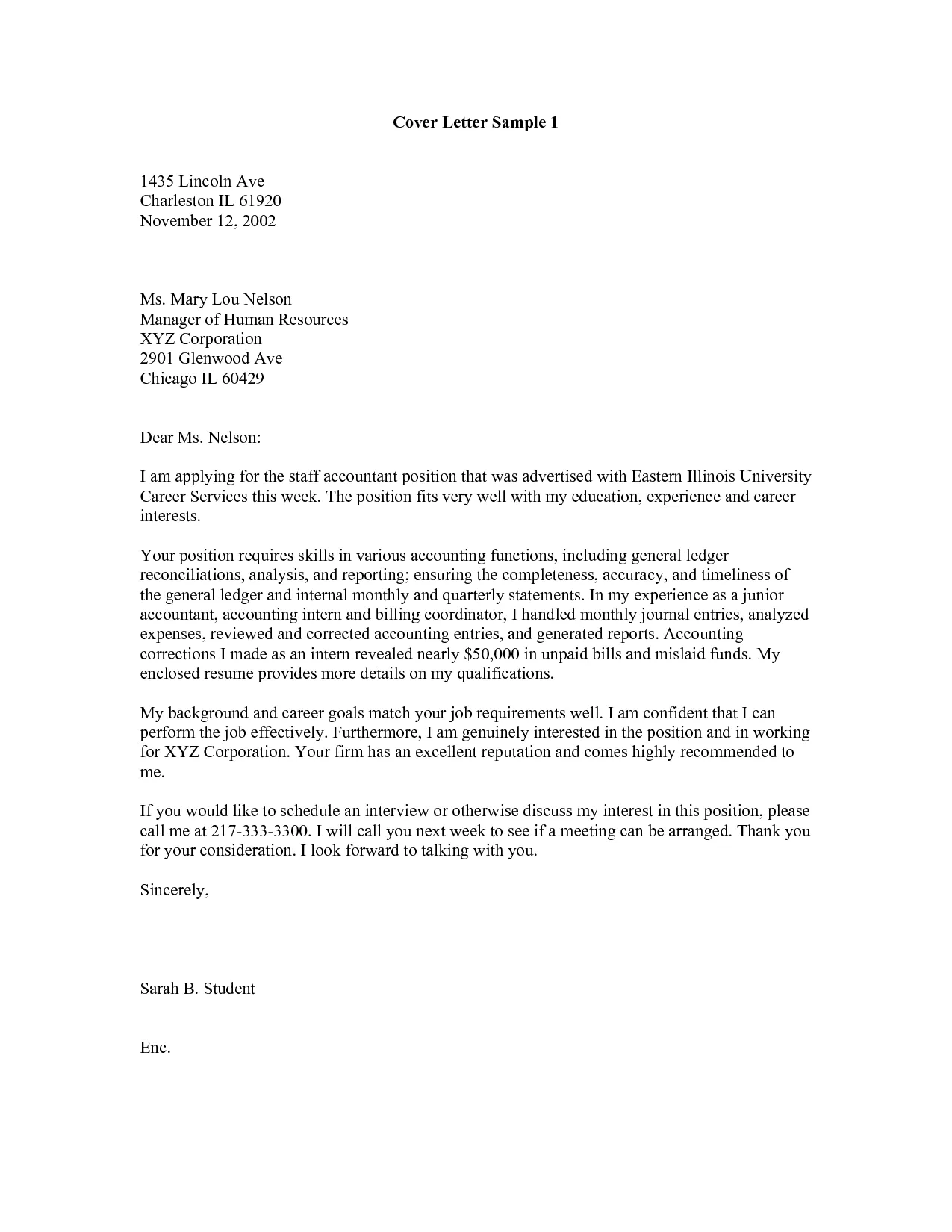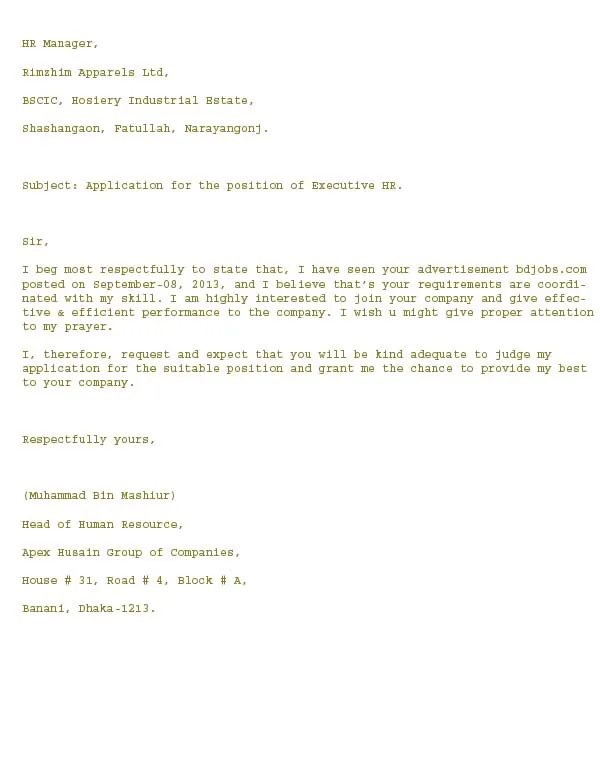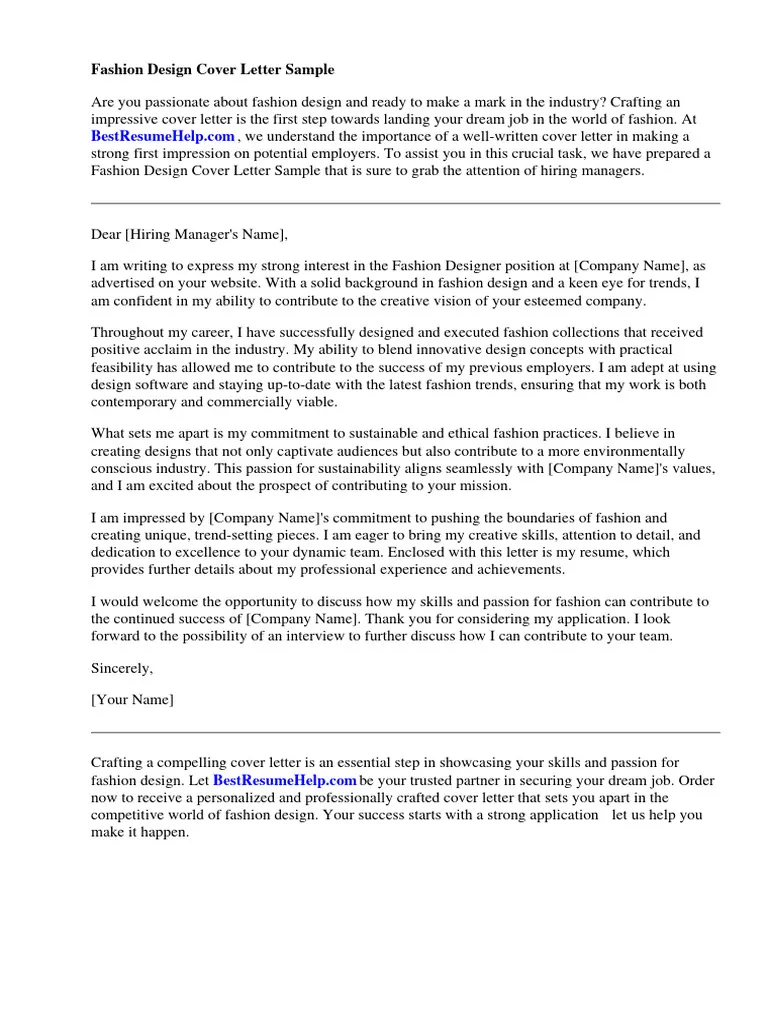Why a Fashion Intern Cover Letter Matters
Landing a fashion internship is a crucial first step in your career journey. But, before you even step foot in a design studio, showroom, or retail environment, you need a compelling cover letter. Your fashion intern cover letter is often the first impression you make on a potential employer, a snapshot of your enthusiasm and potential. It’s your chance to showcase not only your skills and experience, but also your unique personality and passion for the fashion industry. A well-crafted letter can be the key to unlocking opportunities, paving the way for interviews, and ultimately, securing your dream internship. In a competitive field like fashion, a standout cover letter can be the difference between your application landing in the ‘yes’ pile or the ’no’ pile. It’s the single most important document to highlight your unique value proposition.
The Purpose of a Fashion Intern Cover Letter
The primary purpose of a fashion intern cover letter is to introduce yourself and express your interest in a specific internship opportunity. It’s not just a formality, but a targeted tool to convince the hiring manager that you’re the right fit for the role and the company. Unlike a resume, which simply lists your qualifications, a cover letter allows you to tell your story. It enables you to articulate your career goals, explain why you’re passionate about fashion, and demonstrate how your skills and experiences align with the internship’s requirements. It’s a chance to show your personality, your writing skills, and your genuine interest in the company. The cover letter bridges the gap between your resume and the potential employer, providing context and showcasing your motivation to succeed in the fashion world. Your objective is to show that you are the best candidate.
Key Components of a Fashion Intern Cover Letter

A strong fashion intern cover letter comprises several key elements that work together to create a compelling narrative. Think of it as a well-designed outfit; each piece plays a vital role in the overall impact. From the header to the closing, every aspect of your cover letter should be carefully considered to present you in the best possible light. These core components serve as the foundation of your letter, ensuring that you communicate your message effectively. Taking the time to craft each section will result in a professional and persuasive cover letter, greatly increasing your chances of getting an interview. Let’s break down the essentials.
Header Information
Your cover letter should start with a professional header. This section sets the tone and provides essential contact information. It’s the first thing the hiring manager sees, so it needs to be neat, organized, and easy to read. The header also establishes the sender and recipient information, making it clear who is sending the letter and to whom. Ensure your header aligns with the company’s brand, and consider the overall design as it will set the standard.
Your Name and Contact Details
Begin with your full name, followed by your phone number, email address, and, optionally, your LinkedIn profile URL or portfolio link. Make sure your email address sounds professional (e.g., firstname.lastname@email.com). Double-check that your contact information is accurate and up-to-date; the hiring manager needs to be able to reach you easily.
Date

Include the current date directly below your contact information. This shows the letter’s timeliness. Use a standard format (e.g., Month Day, Year).
Recipient’s Information
Below the date, include the hiring manager’s name, their title, the company name, and the company’s address. If you don’t know the hiring manager’s name, do some research (LinkedIn is a great resource). Addressing the letter to a specific person shows you’ve done your homework. If you are unable to find a specific person, use a general title such as ‘Hiring Manager’.
Salutation
Start with a formal salutation. “Dear [Hiring Manager name],” is the most common and appropriate. If you can’t find the hiring manager’s name, use a professional alternative like ‘Dear Hiring Manager,’ or ‘Dear [Company Name] Team’. Avoid overly casual greetings.
Body Paragraph 1 Grab Their Attention

The opening paragraph is your chance to make a strong first impression. It sets the tone for the rest of your letter and determines whether the reader will continue. Your goal is to immediately capture the hiring manager’s attention and convey your enthusiasm. Begin by stating the position you’re applying for and where you found the opportunity. Then, express your passion for fashion and briefly highlight your most relevant skills or experiences. The initial sentence must be clear, concise, and intriguing, encouraging the reader to learn more about you and your qualifications. Make sure your intent is clear and you are not beating around the bush.
Express Your Passion for Fashion
Show your genuine interest in the fashion industry and the specific company. Mention what draws you to fashion, whether it’s design, marketing, or a specific aspect of the business. Demonstrating your passion from the start makes you stand out. Share a brief, compelling reason why you are excited about the opportunity.
Highlight Relevant Skills and Experiences
Briefly mention the skills and experiences that align with the internship requirements. Tailor this to the specific role. If the internship requires strong organizational skills, mention relevant experiences. By showing that you have the needed experience, you show that you are the right fit. Don’t just list skills; provide a sentence or two on why those skills make you a good fit.
Body Paragraph 2 Showcase Your Accomplishments

This paragraph is where you provide more detail about your accomplishments, focusing on how you’ve applied your skills in the past. The goal is to demonstrate your capabilities and potential. Use this opportunity to provide specific examples that support your claims. Back up your skills with experiences that prove that you would be a good fit.
Quantify Your Achievements
Whenever possible, quantify your achievements. Instead of saying you have ‘strong organizational skills,’ say you ‘managed a project involving 50+ participants, leading to a 15% increase in efficiency.’ Quantifiable results make your achievements more credible and impactful. Use numbers, statistics, and concrete examples to illustrate your value. It provides tangible evidence of your abilities and leaves a lasting impression.
Tailor Your Letter to the Role
Customize this paragraph to the specific internship requirements. Review the job description carefully and address the key qualifications and responsibilities. Make sure you clearly indicate why you are a strong match for this role. Focus on how your experiences and skills directly translate to the internship’s needs. This shows that you have done your research and are truly interested in this specific opportunity.
Body Paragraph 3 Connect Your Passion and Goals

In the final body paragraph, you must reiterate your enthusiasm, showcase your career goals, and explain why you’re a great fit for the company. This is your chance to summarize your key qualifications and highlight how this internship aligns with your career aspirations. Making this paragraph effective can make your candidacy really stand out.
Explain Why You’re the Perfect Fit
Explain why you believe you’re the perfect candidate. Focus on how your skills and experiences align with the internship’s requirements and the company’s values. Mention any specific qualities or experiences that make you stand out from other applicants. Refer to the company’s mission, values, and recent projects to show that you have done your homework.
Mention Your Enthusiasm and Desire
End by reiterating your enthusiasm for the opportunity and expressing your desire to contribute to the company. Mention your eagerness to learn and grow within the fashion industry. Make it clear that you’re not just looking for an internship, but a chance to build a career in the industry. Express your interest in being a part of the company’s future success.
Closing the Letter

The closing of your cover letter is as important as the opening. It’s the last thing the hiring manager will read, so make sure it leaves a positive and lasting impression. The closing should be polite, professional, and forward-looking. Take the time to craft a strong and memorable end to your letter.
Formal Closing
Use a formal closing. ‘Sincerely,’ or ‘Best regards,’ are standard and appropriate choices. Avoid overly casual closings. This reinforces the professional tone you’ve established throughout the letter.
Sign-Off
Type your full name below the closing. If you are sending a physical copy, leave space for your signature above your typed name. Ensure that your name is easy to read and presents you professionally. Check that the sign-off and name format is consistent with the overall tone of the cover letter.
Formatting and Style Tips
The visual presentation of your cover letter can be just as important as its content. A well-formatted cover letter is easy to read, visually appealing, and reflects your attention to detail. Consider the font, spacing, and overall layout to create a document that makes a positive impression. Following these formatting and style guidelines can significantly enhance your chances of success.
Choose a Professional Font
Select a professional and easy-to-read font, such as Times New Roman, Arial, or Calibri. Use a font size between 10 and 12 points. Make sure the font is consistent throughout the document. Avoid using overly ornate or distracting fonts; the focus should be on your content, not the font choice.
Proofread Carefully
Thoroughly proofread your cover letter for any typos, grammatical errors, or inconsistencies. Errors can make you appear unprofessional and careless. Read your cover letter multiple times, and ask a friend or family member to review it as well. Pay close attention to spelling, grammar, punctuation, and sentence structure. A well-written cover letter demonstrates your attention to detail and professionalism.
Formatting Tips for Fashion Intern Cover Letter
Use single spacing within paragraphs and double spacing between paragraphs. Use left alignment. Keep the tone of the letter professional and enthusiastic. Be concise and to the point. Ensure that the design is visually appealing. Include whitespace to prevent the cover letter from looking cluttered and to make it easy to read.
Common Mistakes to Avoid
Even the most talented fashion interns can make mistakes that damage their chances of getting an interview. To avoid these pitfalls, it’s important to be aware of common errors and how to correct them. Avoiding these mistakes can make a substantial difference. Here are the most common ones, along with ways to fix them.
Generic Language
Avoid using generic or cliché phrases. Write a cover letter that is unique to you and reflects your passion. Generic language makes your cover letter sound impersonal and uninspired. Instead, use specific examples, details, and personal anecdotes to showcase your enthusiasm and demonstrate your understanding of the fashion industry.
Typos and Grammatical Errors
Typos and grammatical errors are a major turnoff. Errors can make you look careless. Proofread your cover letter multiple times and ask someone else to review it. Pay close attention to spelling, grammar, punctuation, and sentence structure. A well-written cover letter showcases your attention to detail and professionalism.
Focusing Solely on Yourself
While it’s important to highlight your skills and experience, avoid making the cover letter all about you. Instead, focus on how you can contribute to the company. Tailor your cover letter to the specific internship and the company. Show the hiring manager that you understand their needs and can add value. Demonstrate a clear understanding of the company’s mission, values, and current projects. It’s essential to showcase your ability to align with the organization’s objectives.
Review and Submit Your Cover Letter
Before submitting your cover letter, take the time to review it carefully. Check for any errors in grammar, spelling, and formatting. Make sure your contact information is correct and your letter is tailored to the specific internship. Double-check all the details, then submit your cover letter with confidence. Submitting the cover letter and the resume is the final step to applying for the internship of your dreams. Following these guidelines will significantly increase your chances of success. Consider your fashion intern cover letter as a key step towards launching your career.
